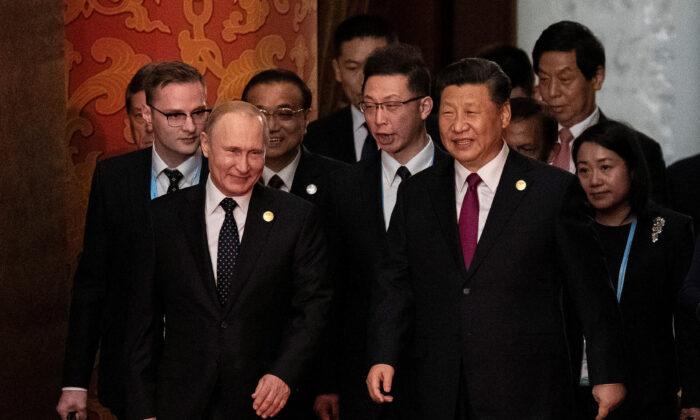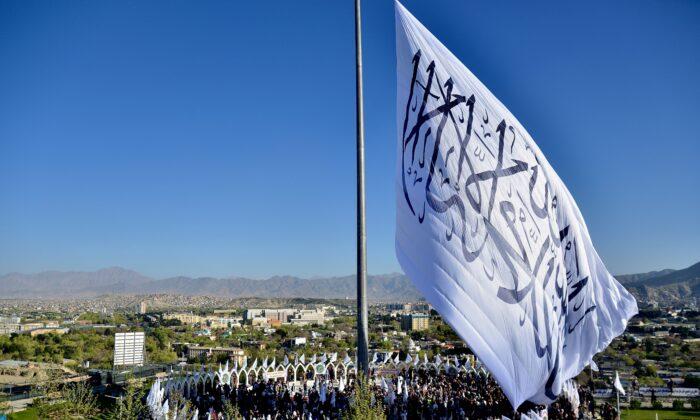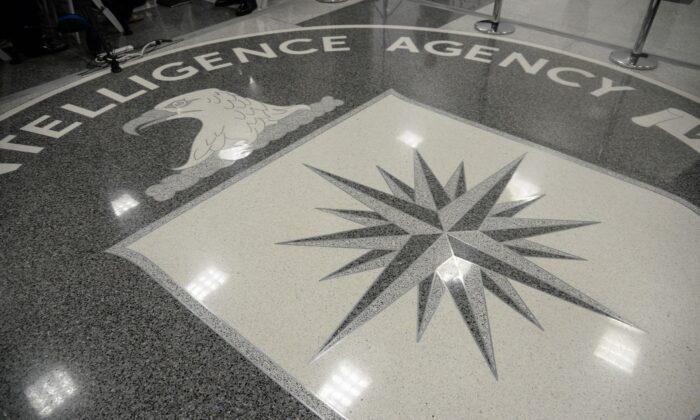Commentary
A new axis of cooperation that includes Iran, Russia, and China is becoming more formalized and overt. The three nations are banding together to counter American power as the world’s eyes are glued on Ukraine.
The Islamic Republic joined the Shanghai Cooperation Organization (SCO), of which Russia and China were founding members, in September. The SCO
aims to foster military, economic, and cultural cooperation of its members, which also include the former Soviet Central Asian nations of Kazakhstan, Uzbekistan, Kyrgyzstan, and Tajikistan.
Vladimir Putin
views Iran’s participation in the SCO as part of Russia’s project of Eurasian integration.
“Naturally, the United States and the West, in general, are concerned about new coalitions, which are currently [being created] on the international arena,” Iran’s ambassador to Russia Kazem Jalali
told Russia’s state news agency TASS on Jan. 24. “A coalition of the Islamic Republic of Iran, the Russian Federation and the People’s Republic of China is an example of such strategic coalitions.”
Iran’s President Ebrahim Raisi visited Moscow recently, proposing a strategic agreement with Moscow that could cement their relations over the next 20 years. Raisi
told the Russians that “today’s exceptional circumstances require significant synergy between our two countries against U.S. unilateralism.” Beijing remains staunchly opposed to U.S. sanctions against Tehran.
The Russians and Iranians
agreed in October to create a “Joint Military Commission” to help coordinate actions between the two nations. Last year, Iran also signed an agreement with China on bringing closer military and economic cooperation.
The relationship among the three is not stable at the moment, because they each have differing interests, according to Ambassador Marshall Billingslea, the former top nuclear negotiator in the Trump administration who worked with China and Russia and has studied Iran extensively.
“Beijing and Moscow have a shared desire to undermine liberal democracy,” Billingslea said.
Iranian, Chinese, and Russian navies conducted maneuvers in the Indian Ocean
called “Maritime Security Belt 2022” on Jan. 21 in a reminder of the growing cooperation among these three powers. China’s People’s Liberation Army Navy
sent a guided-missile destroyer, a supply ship, helicopters, and members of its marine corps to these exercises. Eleven Iranian naval vessels
participated, as did several Russian warships, including a destroyer and an anti-submarine warfare vessel.
Iran hopes this cooperative effort will counter the influence of the U.S. Navy in the Persian Gulf and Arabian Sea.
The head of Iran’s navy, Commodore Habibollah Sayyari, previously
promised future joint exercises with the Russian and Chinese navies.
The three held a similar exercise in the Gulf of Oman near the mouth of the Persian Gulf in 2019.
“The recent naval drills by Russia, Iran, and China set a new model for ensuring safety and security of maritime in international waters,” Iranian Rear Admiral Shahram Irani
told Iran’s Fars News Agency.
Russia and Iran have increased their cooperation since the Russians first sent troops to Syria in 2015.
“The joint naval exercise is interesting, but I read it as more of Russia and China working on interoperability and including the Iranians for messaging purposes,” Billingslea said. “All three are interested in curtailing … our influence and in diminishing their respective vulnerabilities.”
In the 1930s and 1940s, the Axis powers of Germany, Italy, and Japan sought to divide the world into spheres of influence. Germany and Italy claimed Europe, and Japan had Asia in opposition to the United Kingdom, France, and the United States—and against liberal democracy.
This new axis aims to give Russia a sphere of influence in Europe and the Arctic, Iran a sphere in the Middle East and Central Asia, and China in East Asia. As with the original Axis, this new axis brings together aggressive authoritarian powers with a desire to dominate the world order.
Vladimir Putin and Xi Jinping
will meet following the opening of the Winter Olympics in Beijing on Feb. 4, and China has backed Russia on Ukraine thus far. Russia and China have also grown close amid competition between China and America’s allies in East Asia.
Unlike Russia and China, Iran doesn’t have a large enough economy to build a global economic presence. However, Iran’s criminal terrorist empire is a convenient wrecking machine that the Chinese and Russians can exploit for operations they don’t want to do themselves.
Former Secretary of State John Kerry’s 2013
declaration that the United States would no longer enforce the Monroe Doctrine barring non-hemispheric powers from meddling in America’s neighborhood has benefitted these nations.
These new axis powers now extend their influence into our own hemisphere. Russia, China, and Iran all have established footholds in Latin America due to relationships with left-wing governments.
The three
successfully banded together to protect the regime of Venezuelan dictator Nicolas Maduro in 2019 following the failed Trump administration effort to oust him. The three have stepped up economic and military aid to Venezuela. Russia
threatened to deploy troops to Latin America in retaliation for U.S. support for Ukraine. Iran uses Hezbollah as a proxy in Latin America to counter U.S. influence and destabilize the region. Hezbollah has a strong presence,
including with the Mexican drug cartels. China, for its part, has
unveiled plans to increase its presence in Latin America that could lead to China’s navy gaining access to the Caribbean.
The pace of their activities has accelerated in recent years due to the negligence of the Obama, Trump, and Biden administrations to put the financial screws on the Russians.
“The more Venezuelas and Nicaraguas they can create and sustain, the fewer democracies and natural allies there are for the United States,” Billingslea said.
The Obama administration’s refusal to practice deterrence during its eight years in power—and President Joe Biden’s appeasement—are largely to blame. Now the world sits on the precipice of a possible World War III. Closer ties among the Russia–China–Iran axis could be the perfect storm in the event of war.
Views expressed in this article are opinions of the author and do not necessarily reflect the views of The Epoch Times.





